Video of the Week:
Pruning Fruit Trees
Turfgrass:
Core Aeration of Cool-Season Lawns
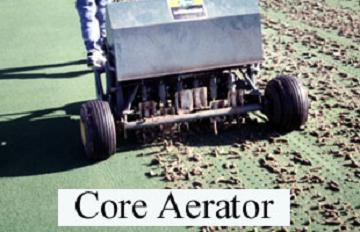
Core-aerating is one of the best things you can do for your lawn. It relieves compaction, hastens thatch decomposition, increases water infiltration and helps promote better root growth. Pay attention to the soil moisture level when coring. The soil should easily crumble when worked between the fingers. If it is too wet, the machine's tines will plug and it will merely punch holes in the wet soil, which increases compaction. If it is too dry, the tines will not be able to penetrate deeply enough to be of benefit. (Ward Upham)
Vegetables:
Frost Proof Vegetable Plants
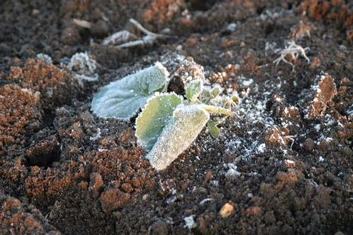
Controlling Weeds in Home Garden Asparagus Beds
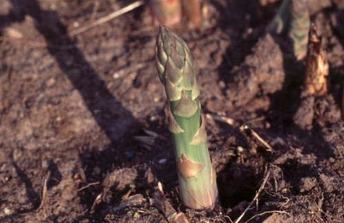
Herbicides can be used before asparagus emerges. Glyphosate (Roundup, Killzall) will kill weeds that are actively growing, and the preemergence herbicide trifluralin can be used to kill weed seeds as they germinate. Trifluralin is found in several products, but not all of them list asparagus on the label. Those that do have asparagus on the label include Miracle-Gro Weed Preventer Granules and Monterey Vegetable and Ornamental Weeder. Mulch can also be used to keep weeds from invading.
No herbicides can be used during harvest. The end of harvest presents another opportunity. Remove all fern and spears and apply Roundup to control virtually all of the weeds present. Past the harvest season and after regrowth of the asparagus, options are limited. Products that contain sethoxydim can be applied to asparagus to kill grassy weeds. Sethoxydim has no effect on broadleaves including asparagus. Two sethoxydim products available to homeowners and labeled for asparagus are Monterey Grass Getter and Hi-Yield Grass Killer. With broadleaves, the only option is to pull them and look forward to next year. (Ward Upham)
Remove Fern and Fertilize Asparagus
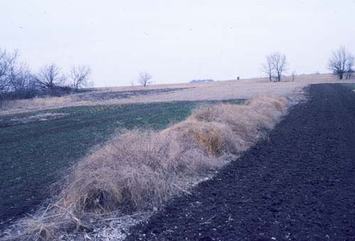
Also, asparagus benefits from a fertilizer application early spring. Fertilize according to a soil test or add 1 to 2 pounds of a 10-20-10 fertilizer per 20 feet of row before growth starts. If a soil test shows that only nitrogen is needed, apply 1 pound of a 16-0-0 product or ½ pound of a 30-4-5, 27-3-3 or similar fertilizer per 20 feet of row. Incorporate lightly with a tiller or rake in fertilizer before spears emerge. Fertilize again at the same rate after the last harvest. (Ward Upham)
Flowers:
Pruning Hybrid-Tea Roses
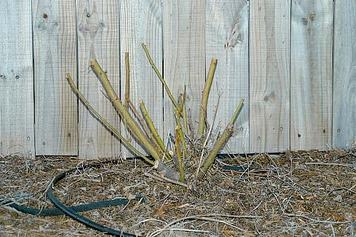
For shrub roses, pruning usually consists of removing dead wood or light pruning for shaping. This article focuses on hybrid tea roses which require much more extensive pruning. With hybrid teas, there are three pruning styles, each with a specific purpose. Heavy or severe pruning is done on well-established, vigorous plants to produce large, showy flowers. Prune back to three to four healthy canes with three to six eyes per cane. Canes normally will be 6 to 12 inches long. Moderate pruning is done on well-established, healthy plants and is designed to increase the number of flowers produced rather than increase flower size. Leave five to six healthy canes with at least seven buds per cane. Prune stems to 12 to 18 inches long. Light pruning rejuvenates plants after years of neglect or may be performed on newly established plants. Leave five to seven canes of about 18 inches or more in length. This helps maximize leaf area for energy production and rejuvenates plants.
If your plants suffered a significant amount of winter damage, they may need to be cut back more severely than even the heavy-pruning style. This will result in a few large flowers but in this case is your only option. (Ward Upham)
Ornamentals:
Breaking the Pine Wilt Cycle
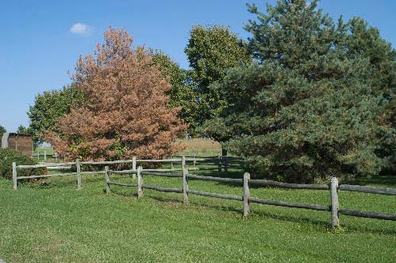
Pine wilt is caused by the pinewood nematode, a microscopic worm. The nematode is spread by the pine sawyer beetle. The nematode feeds and multiplies in the tree’s resin canals, causing wilting and death in several weeks to several months. The nematode and beetles spend the winter in the infected tree. In spring, the beetles emerge starting around May 1, carrying nematodes to new trees and continuing the cycle of infection.
The disease is common in the eastern half of the state, and it is spreading west around 10 miles per year. There have been pockets of infection in the western part of the state.
In Kansas, new pine wilt infections are most visible from August to December. Trees wilt and die in a short period of time, from several weeks to a few months. In the first stages, the needles turn grey or green, then yellow and brown. The discoloration sometimes occurs branch by branch, sometimes all at once. With pine wilt, eventually the whole tree dies, within a few months. The brown needles stay on the tree for up to a year after the tree has died. Another key symptom is reduced resin. On a healthy tree, sticky resin bleeds from the site of a wound. In contrast, if a tree has pine wilt, the resin is often reduced or absent, and branches become dry or brittle.
There is a website with color photos and descriptions at the following link: http://muextension.missouri.edu/explorepdf/miscpubs/mx0858.pdf
There are images to compare and contrast pine wilt with other pine diseases here: http://www.ksre.ksu.edu/bookstore/pubs/l722.pdf
With the other diseases (tip blight, needle blight) only parts of the tree turn brown. With pine wilt, the whole tree is brown and dead. If you aren’t sure if your tree has pine wilt or something else, contact your local K-State Research and Extension Office or the K-State Diagnostic Lab (clinic@ksu.edu).
If a tree has pine wilt, the tree should be cut down by April 1 to make sure there is time to destroy the wood by May 1, when the beetles start to some out. Cut the tree to the ground—don’t leave a stump. Chip or burn the wood immediately to destroy the beetles and nematodes. Don’t keep pine wood around for firewood. (Megan Kennelly)
Wild Garlic, Wild Onion, and Star-of-Bethlehem
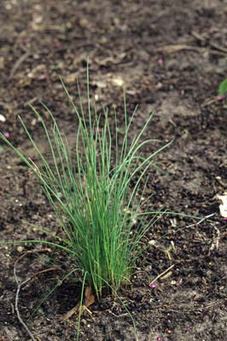
Traditionally we have used 2,4-D or 2,4-D + MCPP + Dicamba (i.e., Trimec, Weed-Out, Weed-B-Gon). These products should be sprayed during March on a day that is at least 50 degrees. Newer products are Weed Free Zone and Speed Zone. Both are combination products that contain a formulation of Trimec plus carfentrazone. These will give a quicker response at cooler temperatures near 50 degrees. A spreader-sticker added to the spray should help any of these products be more effective. At times, the spreader-sticker is already mixed into the weedkiller; no additional amount is needed. These herbicides are also effective on dandelions.
Unfortunately, we have not had a good chemical control for Star-of-Bethlehem. The best products we had were Coolpower (31.3% control) and Turflon Ester (23.8% control). Coolpower is a commercial only product, but Turflon Ester is available to both commercial and homeowner users. But research out of Virginia Tech has improved our outlook. Scientists there did a study in which they gained 96% control of Star-of-Bethlehem one month after treatment by using Quicksilver, a formulation of carfentrazone at the rate of 4 fl. oz/A. Quicksilver is a commercial only product, and therefore is not available to homeowners. However, both Speed Zone and Weed Free Zone contain carfentrazone and would certainly be worth a try if you have this troublesome plant. (Ward Upham)
Contributors: Megan Kennelly, Plant Pathologist; Ward Upham, Extension Associate
 RSS Feed
RSS Feed
